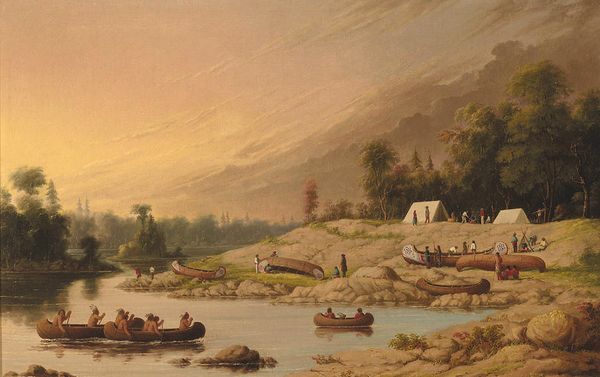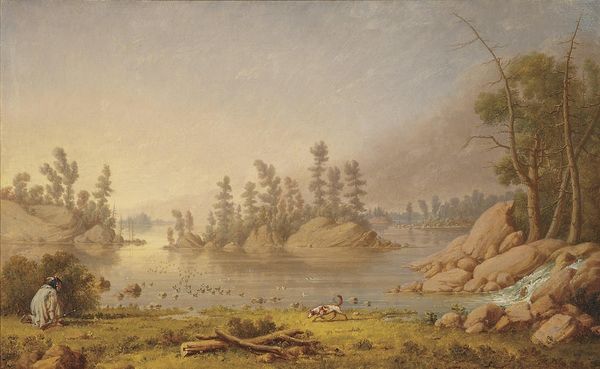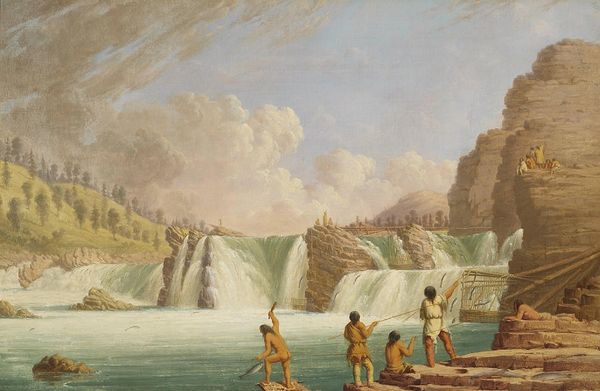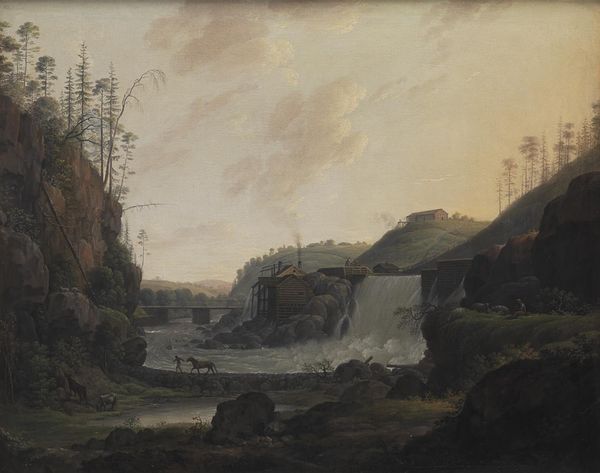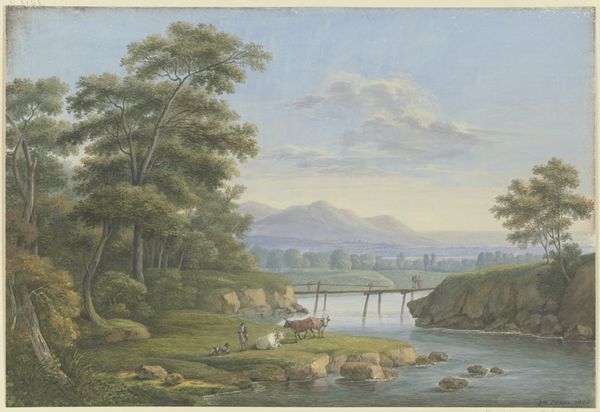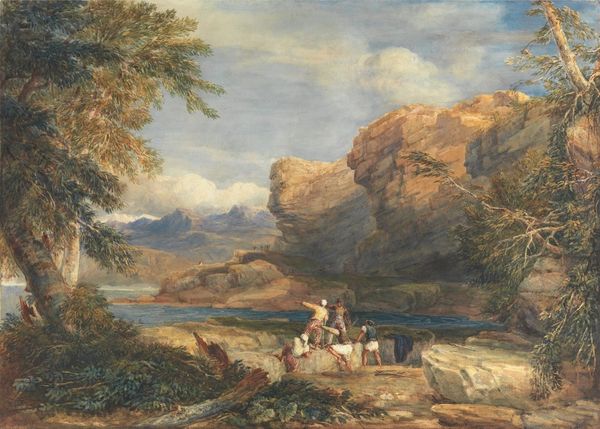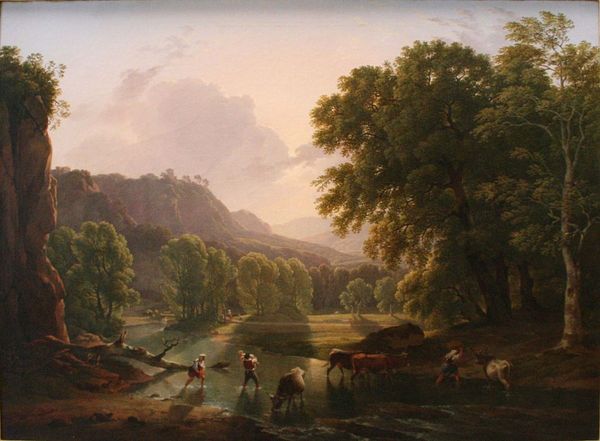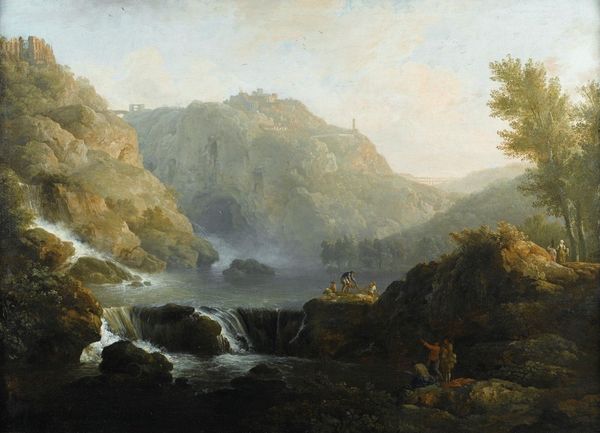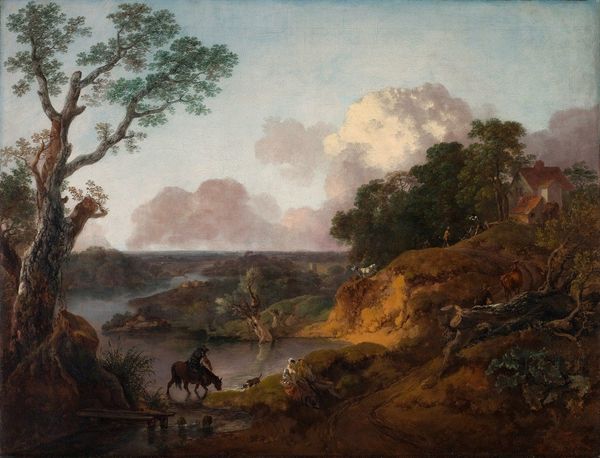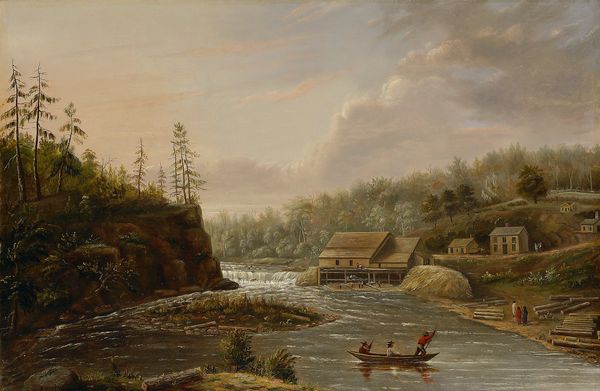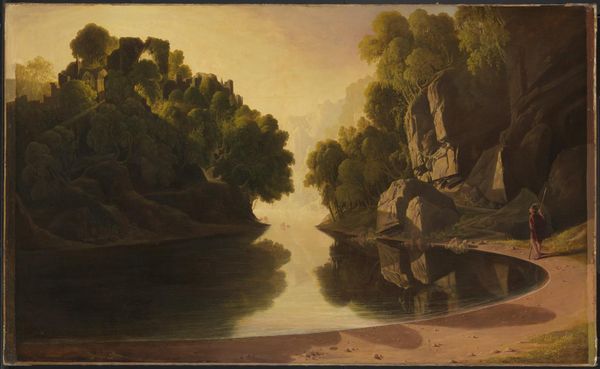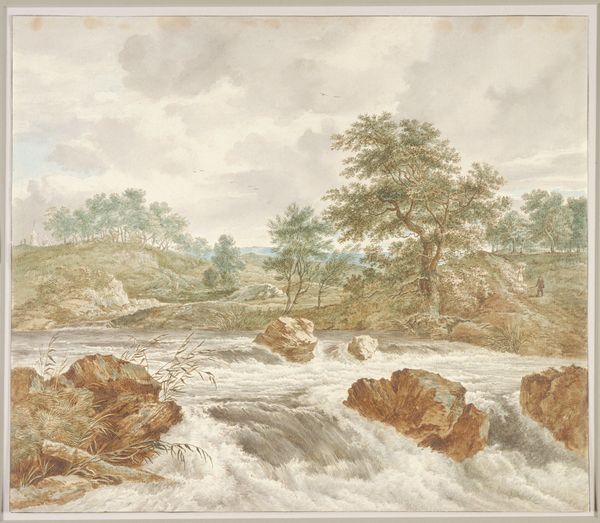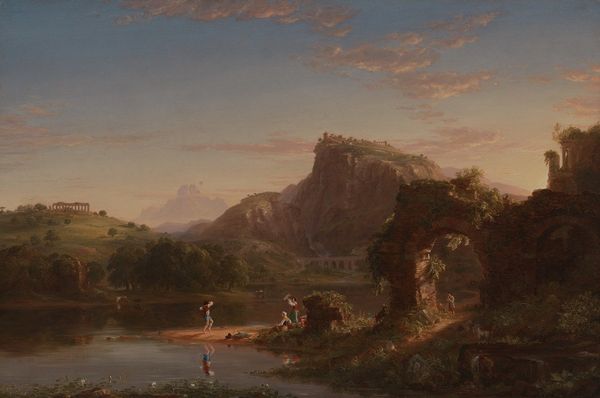
oil-paint, watercolor
#
oil-paint
#
landscape
#
river
#
oil painting
#
watercolor
#
romanticism
#
mountain
#
natural-landscape
#
water
#
watercolor
#
realism
Copyright: Public domain
Curator: Paul Kane’s 1846 work, "French River Rapids", is a remarkable glimpse into the Canadian wilderness. Editor: My first impression is the sheer amount of manual labor seemingly captured here. I am drawn to the individuals on the shore navigating that canoe. Curator: Absolutely. Consider Kane's role in this historical tableau. He presents a narrative laden with themes of encounter, specifically Indigenous peoples and European colonizers depicted in the context of arduous physical labor. The composition, particularly the human figures arranged alongside the watercraft, foregrounds this labor. How might we contextualize this image within the historical realities of the fur trade and resource extraction? Editor: From my perspective, the use of oil paints is central. Observe how it renders the texture of the rocks, the fluidity of the water, even the cloth of their clothing. The very application of paint creates layers reflecting the materiality of the depicted environment and, crucially, their interaction with it. We have Indigenous figures maneuvering, portaging. This necessitates an understanding of craft, not merely landscape. Curator: I concur, and expanding our lens to incorporate intersectional identities, how are concepts of gender and racialized labor at play? The figures in the canoe likely occupy differing social roles, with their bodies subjected to the demands of colonial trade networks. Do the artist's techniques serve to romanticize or critique the relationships? Editor: I notice how the light almost shines onto the rocks, accentuating their density and weight. Considering their direct relation to their transport, this brings to light their roles as navigators, essentially moving resources, raw materials, out of that setting. The canoe serves as a kind of locus point—for transport, for sustenance—crafted labor. Curator: Yes, it underscores the intricate nexus between bodies, landscapes, and modes of transportation within settler-colonialist expansions. We might interrogate if the painting implicates viewers to critically engage this historical context. Editor: For me, appreciating how the materials shape our viewing informs our relationship to the land itself. Seeing labor as material and the canoe as material helps to reflect on larger systems of resource and consumption and exchange in a historical moment. Curator: Precisely, together we teased out narrative strands encompassing identity and production. Editor: Right, material and narrative, like rapids and rocks, interdependent parts to consider in our viewing.
Comments
No comments
Be the first to comment and join the conversation on the ultimate creative platform.
